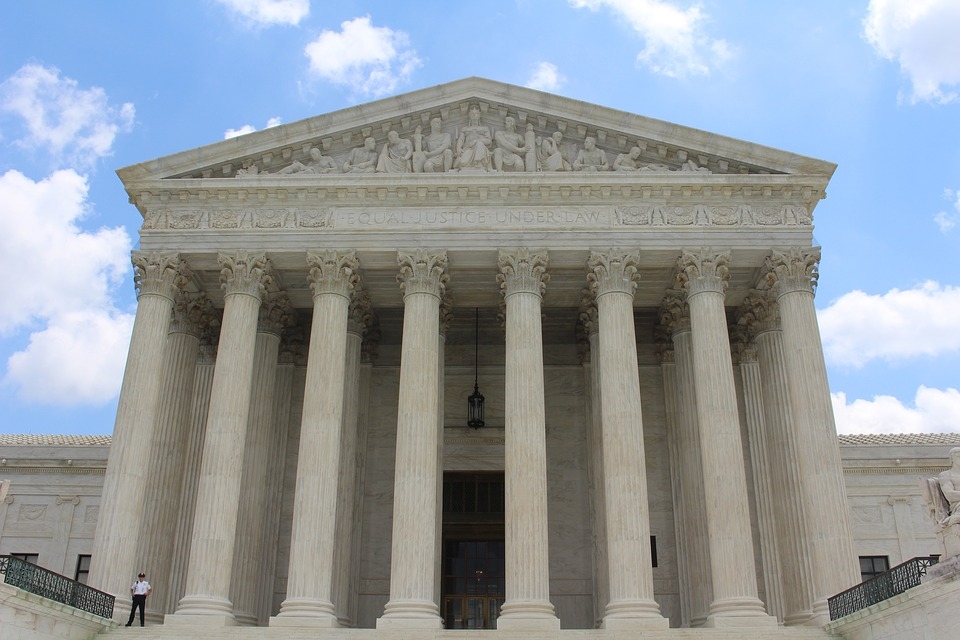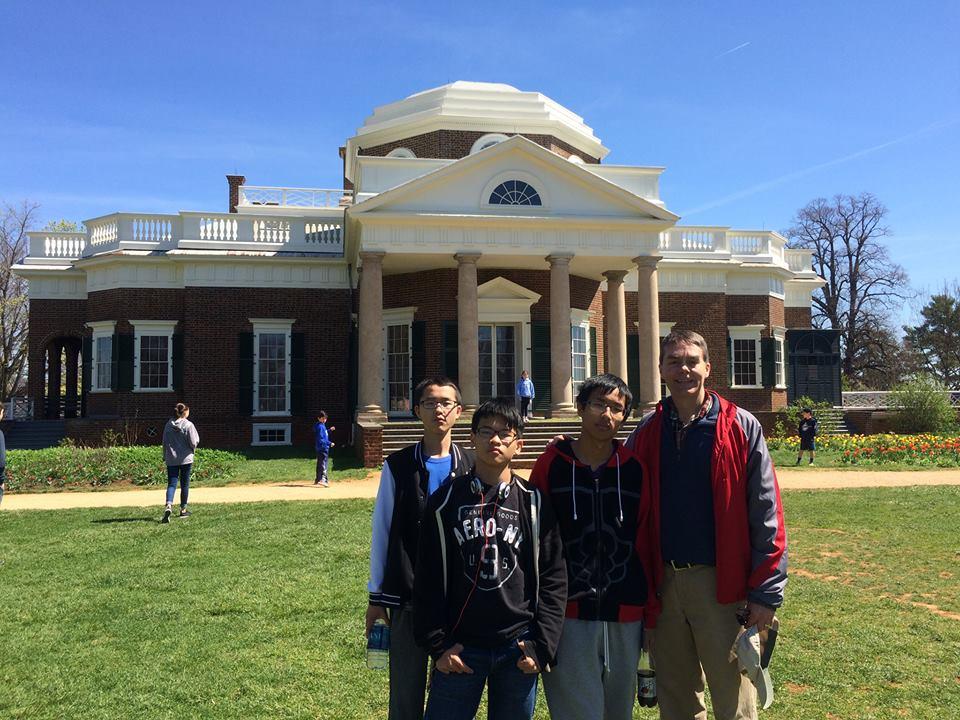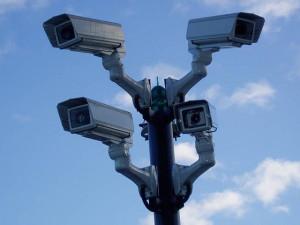
|
This is not baby food.
For years, I have encouraged my students to register to vote, “do their homework” about the candidates and the issues, and then vote intelligently by understanding the evidence. “Un-informed voting” is choosing a candidate because of how easy his or her last name is to remember, how much hair she or he has (I am not making this up!), or how the TV commercials make me feel. (It may sound crazy, but some people actually vote for these reasons.) So this is why I write this post, to address a key issue of the 2016 US presidential election. Ironically, it is about some people’s names NOT on the 2016 ballot, names probably most of us have never heard of…yet. The topic: the US Supreme Court (SCOTUS). This has been a major issue for years, and it bothers me that few seem to be aware of it as a critical election issue. However, this year I have heard more people discuss it than ever before, so I hope that is a healthy trend. People are realizing the crucial importance. Why is this important? When the founders established the US and its Constitution in 1787, they wisely set up a government of three branches. That way, no one person or group could (easily) get total control of the government and set up a dictatorship. This system is called “Balance of Powers” or “Checks and Balances.” (There is actually a slight difference between these two systems, but to keep it simple for our purposes today, we will place them together.) Of course the USA’s system is not perfect–none is–but the US is still using the Constitution written in 1787: at 225+ years, the longest-used Constitution of any country anywhere, and the American system is still in many ways the envy of the world. (Just think: more people are trying to get into the US–even risking their lives to enter–than escape from it.) So, for all our problems, the US is still a beacon and model for much of the rest of the world. In review, the three branches of government and their main role: I. Legislative (Congress–to write and make laws)
III. Judicial (Courts–to interpret the laws and decide if a law is constitutional or not)
So, since “supreme” means “highest,” the Supreme Court is the highest court in the US. There are state and lower courts that hear most of the legal cases in the country. In fact, all legal cases start off in those “lower courts.” However, when a person loses a case, he or she can try to appeal their case to a higher court. Each year, some of these cases are heard by higher courts, and each year the Supreme Court judges agree to hear a small number of cases. (If they do NOT hear a case, then the decision of the lower court stands. But, if they DO hear a case, then their decision applies to all 50 US states, and there is no appeal. Their decision stands–unless Congress creates a whole new law regarding that issue, which is unlikely, and would take years to do anyway.)
Since the Judicial branch is one-third of the US federal government, and since that branch is headed by a Supreme Court of only nine judges (an odd number makes a tie vote unlikely), I hope this shows you the crucial importance of those nine people. (In contrast, the US Senate has 100 members and the House of Representatives, 435).
So, how does this relate to the president? This topic is not “baby food,” so let’s go step by step.
Presidents have great powers, and a key power is the authority to name (appoint) all federal judges. (A president can only name a judge whenever there is an opening due to the death or retirement of a sitting judge.) This is a clear example of what I mentioned above, “Balance of Powers” and “Checks and Balances.” Yes, this includes openings on ALL federal courts, and since SCOTUS is the highest court with the most power, then naming a judge to that bench carries great importance. When the Constitution gave the president the power to name new judges, it thus gave the Executive Branch a key “chokehold” over the Judicial Branch.
Note: The Constitution framers, in their wisdom, did not give the president absolute power over new judges. Yes, the president names all new judges. But, the Constitution also requires the US Senate to approve all new judges by a majority vote. In what I see as a further example of genius and foresight, this gives half the Legislative Branch (the Senate) “checks and balances” over the Judicial Branch.
Why is this important to me? So what?
Timing. I write this for you in 2016. Whoever wins the White House, Clinton or Trump, by the Constitution, will have only four years in office, then face the voters again. If he or she runs again and wins, he or she has eight years in office, total, and no more. Congressmen have no total time limit, but Senators face reelection every six years, while House members do so every two years. In contrast, federal judges have NO term limit. They sit on the bench, with their safe government job, pension, healthcare plan (ironically not Obamacare), and enormous power, until they retire…or die. There is practically no way to remove them from office. (Yes, the Constitution allows an impeachment process for judges, but like any impeachment process, it is slow and cumbersome, and in all US history, it has been used less than a handful of times.) So, love it or lump it, a new federal judge has the potential to sit on the bench–and make rulings that directly affect you and your liberties–for much of the rest of your life. Example: In Feb. 2016, a member of the Supreme Court, Antonin Scalia, suddenly passed away while on vacation in Texas. President Reagan appointed Scalia to the Supreme Court in 1986, with 98-0 Senate approval, thus making him the first Italian-American to serve on the high court. Scalia ended up serving on the bench during the Reagan, Bush Sr., Clinton, Bush Jr., and Obama Administrations. I want to staple this idea to your brain: Reagan put Scalia in office when I was a college student, and he served in that position till his death when I was a grandfather. In other words, this is a legal way for a president to extend his legacy and influence. Reagan placed Scalia on the Supreme Court in 1986, half-way through his second (and last) term. Even though Reagan left office in January 1989, later got Alzheimer’s, and died in 2004, his influence lived on via Scalia’s writings and rulings, until 2016.
Lack of democracy. The Judicial branch is the least democratic of all three branches. Here’s why: all 535 members of Congress are elected directly by voters, and must face reelection every so often. Presidents are (almost) directly elected by voters via the Electoral College, and also face re-election after four years. But federal judges are different. 1. They are never chosen directly by voters; the president names them, and the Senate must approve by a simple majority vote (usually not hard to manage). 2. Unlike Congressmen or the president, they have no “term limit” where they must step down or face reelection. To put it another way: if you do not like your Congressman or president, you can call their office, picket, write a letter to the newspaper, vote against them next time, etc. But if you don’t like a judge or his or her rulings? You’re stuck. To be fair and give context: the founders knew crowds to be fickle and maybe even dangerous (that’s why the Founders established the Electoral College, different reelection years for members of the House and Senate, etc., to level out and compensate for the “mood swings” of the masses.) So, since judges did not need to face voters or have term limits, the hope was that they would be more fair-minded and make correct judgments, without regard to their popularity or the pressure of facing reelection.
Three of my students and I at Monticello–Thomas Jefferson’s home
Jefferson‘s warning. He wrote in 1804 to Abigail Adams: “the opinion which gives to the judges the right to decide what laws are constitutional and what not, not only for themselves in their own sphere of action but for the Legislature and Executive also in their spheres, would make the Judiciary a despotic branch.” http://founders.archives.gov/documents/Jefferson/99-01-02-0348 The concern was, if judges become too powerful over time and cannot be removed, they might become “tyrants in black robes.”
Courts as a handy tool to “short-circuit” democracy. There are two main strands in US political life. In a nutshell, conservatives (right-wing) generally want to keep things as they are, while liberals (left-wing, aka “progressives“) generally want to change things. For longer than I have been alive, liberals have often used the US court system to push through changes they want to see, but which are widely unpopular and would thus never become a law by the normal legislative process. As mentioned above, if lawmakers take unpopular stands, they have to face reelection soon, so they are loathe to risks angering large segments of the population. Judges, in contrast, have no such fear, so liberals have successfully used the court system to impose numerous, unpopular positions on the American public, too many to name here. Judges essentially making up laws, instead of interpreting laws, is called “legislating from the bench.” The importance of words. One major difference between conservatives and liberals is how they view the court system and the US Constitution. In general, conservatives believe in “originalism.” That is, we should interpret the Constitution in the way the way the authors meant it. Of course, the Constitution can change; that’s why there is a way to add amendments (there are now 27). But as far as the original text, it should be understood and applied as first intended, as nearly as possible. In contrast, liberals usually emphasize the “fluidity” of the Constitution, that it is a “living and breathing” document designed to change to meet the needs of today. They point out that the US in 1790 had fewer than four million people, mainly farmers, scattered along the Atlantic seaboard, far different from the post-industrial US of today. The emphasis on “living and breathing for today” sounds attractive at first thought, but consider it this way: let’s say you signed an agreement or contract with someone, and put all the terms in writing. Do you want that agreement to remain fixed and unchanging, or do you want the other party to claim it is a “living and breathing” contract, and so they can reinterpret it, based on what they want? Maybe you buy a house or car, and borrow money with a loan at a fixed interest rate. If inflation goes up, do you want the lender to say “we need to update the contract with the times, so your interest rate will go up now”? No. You want to keep the original agreement you both made. So, keeping the enduring meaning of words is actually a safeguard for our liberties. https://imprimis.hillsdale.edu/next-supreme-court-justice/
US Supreme Court, before Feb. 2016 Is it possible to guarantee how a judge will vote in the future? No. As mentioned, once a judge is in place, he or she can decide cases any way he or she wants to. So, before a new judge is appointed, the only thing we have to go on is his or her record. We can know this record based on what the judge has written, said in speeches, or how he or she has decided cases in the past. These records can be an indication, but they are no guarantee, how the judge will rule on future cases. A clear example of this is retired Judge David Souter. George Bush Sr. ran for the presidency as a conservative, and millions of conservatives voted for him. In 1990, Pres. Bush Sr. named him to the US Supreme Court; the Senate approved him by an overwhelming 90-9. However, not long after being on the court, he established a liberal voting record which he kept till he retired in 2009–after nineteen years on the high bench. (As further proof of Souter’s liberal record: He stayed in office during all eight years of the Bush Jr. (conservative) administration. If he had retired then, Bush Jr. would have tried to replace him with a conservative. Instead, he retired in 2009. That was not a coincidence. Pres. Obama (liberal) had just been swept into office, so Souter knew Obama would name a liberal judge to replace him. Plus, in 2009, the Democrat Party (liberal) had an overwhelming majority in the Senate, thanks to Obama’s 2008 landslide victory. That guaranteed any judge Pres. Obama named would get easy approval, and it happened, when liberal Judge Sonia Sotomayor was approved.
Is the US Supreme Court as divided as the American people? Yes. As mentioned, the Supreme Court has nine justices, so as to avoid tie votes. And for over the past twenty or more years, many key court cases have been decided by 5-4 votes! Let me explain. During those past twenty years or so, the Supreme Court has had four liberal judges, who usually vote together; four conservative judges, who usually vote together, and one “swing vote.” In other words, since there is often a liberal and conservative view or position on any key issue (abortion, gun rights, religious liberty, freedom of speech, etc.), then we can be reasonably certain, going into any case, how eight of the judges will decide. The four liberal judges will (usually) take the liberal position, and the four conservative judges will (usually) take the conservative position. So, that single “swing vote” basically has the power to decide the outcome of any Supreme Court decision. If he votes with the liberal bloc, they win 5-4, but if he votes with the conservative bloc, they win 5-4. So, lawyers going to argue a case before the Supreme Court often pitch their entire argument to that one judge. In other words, the lawyers pretty well know how the other eight judges will decide, regardless, so if they can get that one swing judge to agree with them, they win the case, 5-4! Earlier, that “swing” vote was the first woman on the Supreme Court, Sandra Day O’Connor. However, since her retirement in 2006, the new “swing” vote is Anthony Kennedy. Both O’Connor and Kennedy are clear examples of the issue above: both were appointed by Pres. Reagan, a conservative, but both ended up having mixed voting records. Now, think on this. The Supreme Court, leading the Judicial Branch, is one-third of the federal government. With a 4-4 tie over the past twenty years or so on many issues, that meant the one swing vote was largely deciding things. So, if it seems crazy to you that one unelected person whose face and name most Americans would not recognize Judge Kennedy has been deciding many of the key cases and choosing the direction of the country, you are beginning to understand the bizarre situation of the recent Supreme Court.
What is the Supreme Court like today (2016)?
So why is this an issue in the 2016 election?
Big Brother is watching you: thanks to increasing technology, judges decide many privacy issues. So, not only is the Supreme Court a major issue in the presidential race, but it is for the thirty-some US Senate races too. Before you vote for a senator, you should know what sort of judge would that senator approve or reject, if given the chance.
What are some key issues the Supreme Court has decided lately, and may decide again?
Obamacare (aka “Affordable Care Act”): After this controversial law’s passage in 2010, entirely with Democrat and no Republican votes in Congress, an amazing 26 US states went to the Supreme Court, arguing that the federal government has no authority to force people to buy a product (health insurance) and that their citizens would not have to comply with the law. Instead of being “affordable,” many Americans have had to pay through the nose due to higher rates. Even this October 2016 news story warns that insurance plan prices will continue to skyrocket. Liberal judges want to force consumers to buy health insurance, while conservative judges generally do not. This controversial issue has been to the court several times. In one case, a conservative judge Chief Justice John Roberts sided with the liberals to keep Obamacare “on life support.” In each case, the High Court kept Obamacare propped up.
Second Amendment (Gun) rights. In District of Columbia v. Heller, the Court 5-4 agreed that the Second Amendment to the Constitution protects an individuals right to possess a gun for legal purposes, such as self-defense inside the home. Liberal judges are usually pro-gun control, while conservatives are usually pro-gun (Second Amendment) rights.
Abortion. This contentious issue is an example of “legislating from the bench,” as mentioned above. Until 1973, each state had its own law regarding abortion and legal protection for unborn children. But that year, the Supreme Court (7-2) struck down the laws of all 50 states in the controversial Roe v. Wade case, which ended legal protections for unborn children. Generally, liberal judges support Roe v. Wade, while conservative judges support the right of state legislatures (and ultimately the voters) to regulate abortion facilities and provide some legal protections for unborn children.
Foreign laws. This is a more recent issue. Historically, the common-sense understanding was, the US Congress made laws that applied within the US, and judges interpreted those “Made in USA” laws. However, recently there is a move to “globalize” laws and some claim that foreign (non-US) laws should also apply in the US, or at least the judges should consider foreign laws and practices when deciding US cases. Liberal judges are more likely to consider foreign laws in their decisions, while conservatives would not.
Memorial Day–previous generations died for our liberties.
In sum, the next president will serve for four years, or at the most eight, if reelected; however, judges make rulings until they retire or die, which could be decades. For some of us, that could be for the rest of our lives, or for much of the lives of our children or grandchildren. Will they rule in ways that defend our Constitutional liberties, liberties that previous generations died for, or will they slowly erode our liberties in the name of creating their version of a utopia, claiming “it’s for our own good”? Judges have tremendous power. You cannot chose them directly, but you can choose the president who names them and the Senate that approves or rejects them. “Black Robes Matter.” Choose wisely. |




